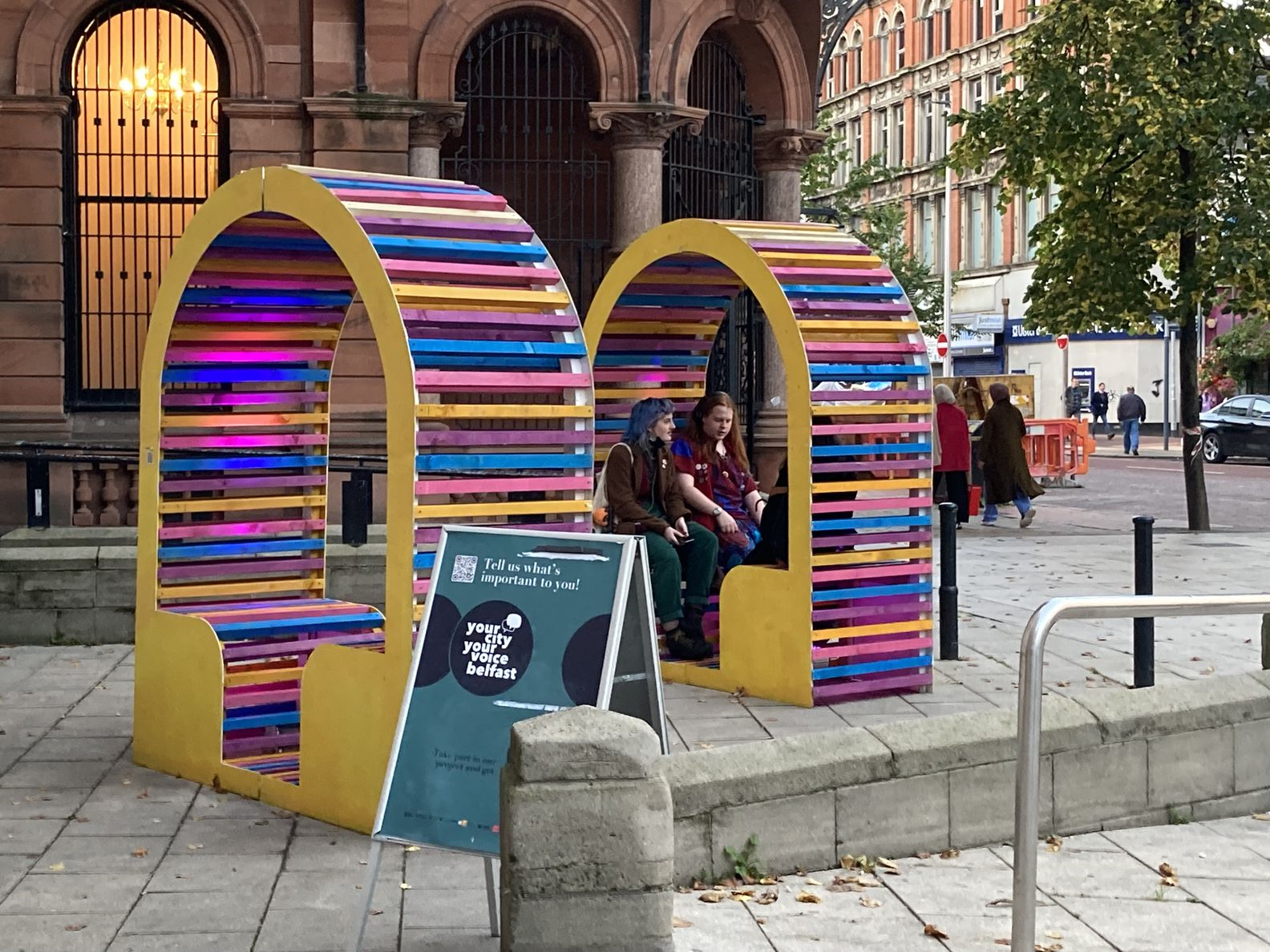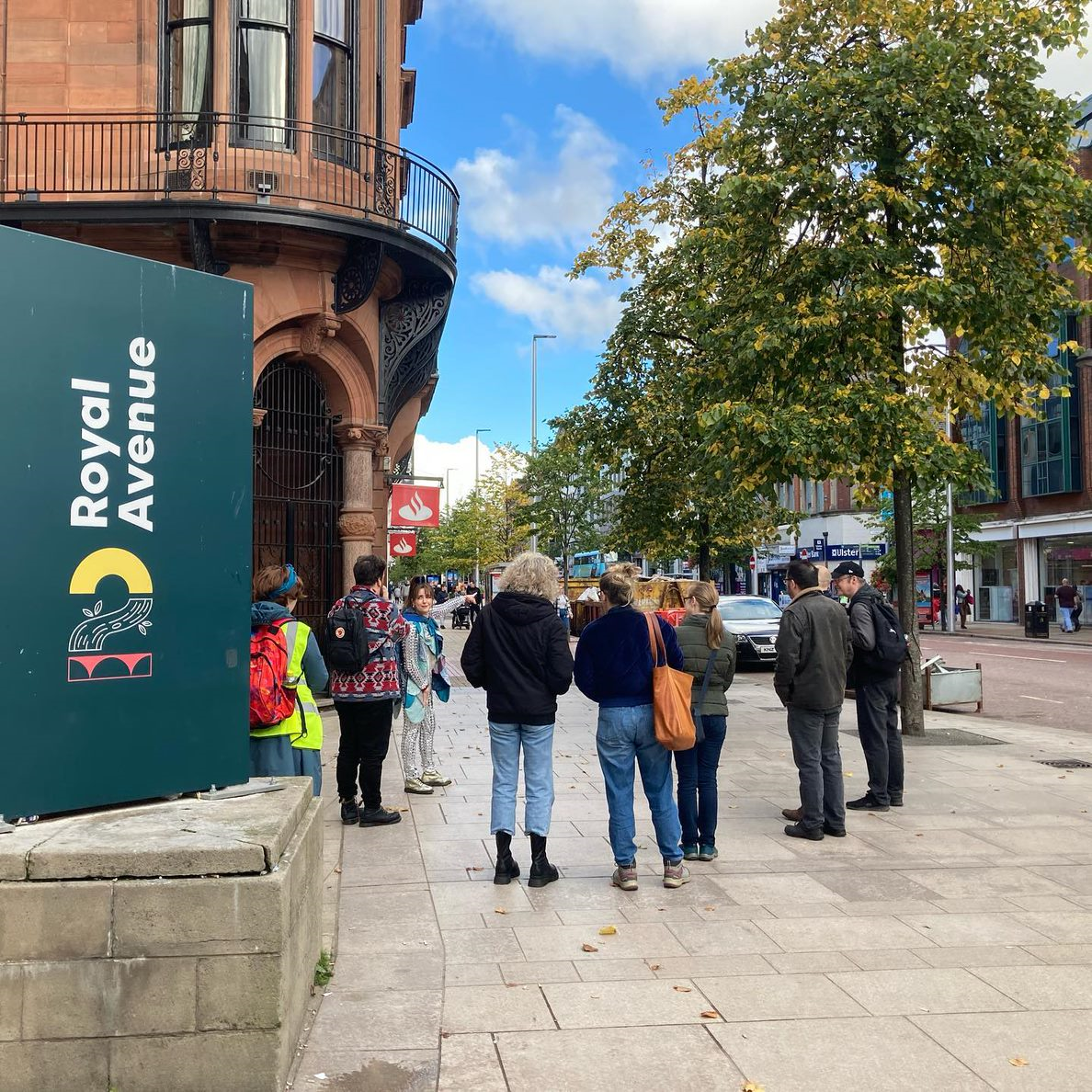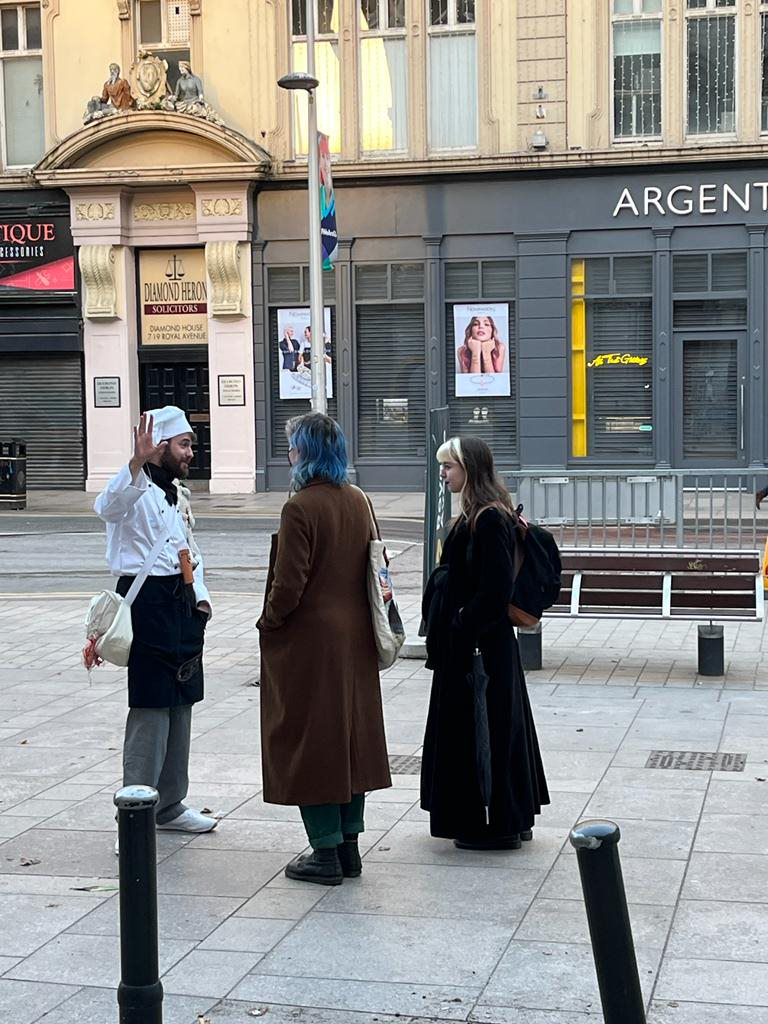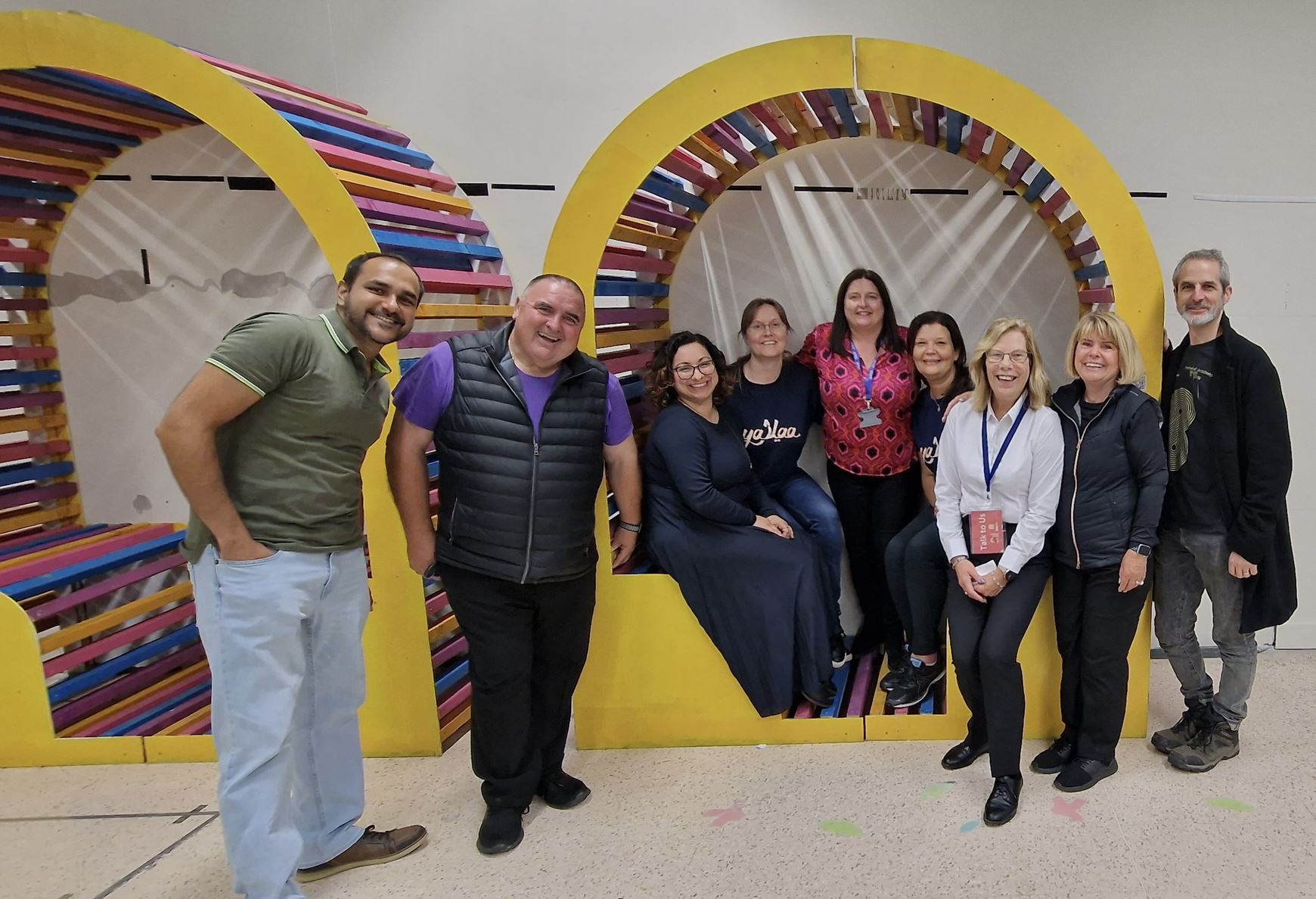Cultural arts collaborations in the Belfast urban room: Spaces of experimentation
By Dr Saul M Golden, CCQOL Co-Investigator and Your City Your Voice Belfast Lead
A rewarding part of developing the Belfast Urban Room has been exploring new ways to connect with different people across the city and being afforded opportunities to work outside of traditional consultation frameworks within a supportive space.
In our pilot, called Your City Your Voice Belfast (YCYVB), we sought to focus our Community Consultation for Quality of Life (CCQOL) research on added cultural arts and performative approaches. In this post I look back on that aspect of YCYVB from our September residency at 2 Royal Avenue (2RA) – a Belfast City Council owned and operated building – to reflect on the outcomes from collaborations with the Council and Belfast-based architects and theatre professionals.
Seeking new avenues for engagement
Without a formal outcome in mind, we had an early idea to try and bring more marginalised voices into public conversations about Belfast by linking up with Belfast’s Culture Night, an annual arts & culture festival usually held on a Friday in September. The one-day festival had grown over several years to draw thousands into the city for all-ages entertainment. Unfortunately, in the post-COVID19 environment, there was still too much uncertainty about an event of that size and it was cancelled just as our urban room got underway.
Rather than give up, we reached out to a local architecture practice called White Ink Architects, whose office has supported previous Culture Nights, and to the KABOSH Theatre Arts Company, a Belfast-based organisation that produces innovative and at-times provocative theatre aimed at “giving voice to site, space and people.” As the Council had allowed use of 2RA rent-free for September, we decided to make the most of this in-kind contribution and use small pots of that funding to bring new insights to the collective pilots.
Both White Ink and KABOSH, as long-term contributors to the physical and cultural development of the city, were willing to work with our YCYVB team in an open-ended way, within both our budgets and timeframes. This allowed us to approach the Council and MayWe, the 2RA venue managers, to offer our own ‘Kultural Arts Friday’ for the last weekend of our urban room, an idea we’d have to fully develop and deliver in three weeks.
Conversation stations and performative pieces
Our brief to White Ink and Kabosh was summed up as engaging “strangers to talk to other strangers as if they knew each other,” in the words of a famous urbanist William H. Whyte.
White Ink proposed a mutually beneficial approach to let their newly appointed architecture graduate employees design a physical installation as a live project with YCYVB as client. We worked with KABOSH to agree on two adaptations of existing Belfast-specific outdoor performances – working from plays to more interactive options involving one actor each.
Within a week, White Ink’s team presented their ideas, refined into painted steel and timber sculptural seating: two rainbow coloured arched seats facing inward as “conversation spaces.” These were built by a Marchitecture student from Ulster University, then installed just outside the 2RA entrance – an event in itself involving both White Ink and YCVB; we contributed to material and transport costs.
What finally came together was a series of unexpected learning. The seating combined with lighting provided by the Council had an immediate impact – drawing people to sit and linger in what was usually an empty space.
 Exterior view of 2RA White Ink seating installation with young people, by Saul Golden
Exterior view of 2RA White Ink seating installation with young people, by Saul Golden
The seating and 2RA venue provided the backdrop for KABOSH’s art-heritage performances.
First, “Nuala of the Farset”, a guardian of Belfast’s ‘hidden’ (culverted) Farset River was ‘brought to life’ to guide visitors from 2RA through Belfast’s famous Entries – the “cracks” of the city, offering her own craic and “healing wisdom.”

YCYVB-KABOSH, Nuala of the Farset, gathered with members of the public outside 2RA, by Saul Golden
Act II featured a ‘defrosted chef from Titanic’ (yes, you read that properly); himself freed from THAT infamous iceberg after 110 years. Chef Barney regaled strangers outside our venue with his adventures and deftly directed those he could to our waiting CCQOL Student Ambassadors, and inside to our urban room.

YCYVB-KABOSH, Belfast Bred – Chef Barney, engaging with members of the public outside 2RA, by Saul Golden
Lessons and leaps of faith
At first the arts idea raised a few eyebrows for delivery within the scope of the project. We were pleasantly surprised when it helped bring more people than expected inside to complete our mapping surveys for adults and under 18s (encouraged too perhaps by a free YCYVB sponsored coffee/tea afterward from our café partners, social enterprise Yallah CIC).

The CCQOL urban room team and 2RA partners from MayWe and Yallah CIC with White Ink seating installations inside
Despite challenges about the extent to which such informal consultation measures in the public realm can be implemented, monitored, secured and shown to be value for money – especially in the context of public spaces like our urban room – they proved worthwhile in addition to other exhibits, talks, and workshops. Here, the literal and academic space of the urban room proved pivotal – affording us a more ‘free-spirited’ approach – a leap of faith from our partners – to allow something less polished for a few hours as a learning exercise.
As a result, our project gave something back to the public realm, if temporarily, while supporting a local arts organisation and linking with valuable future professional education through our White Ink partners. The seats eventually found homes after our urban room in a local community allotment and the Ulster University School of Architecture. During the pilot, the combined installation, lighting, and performance proved an effective filter for our team to initiate conversations about CCQOL.
Most surprising however was how these methods helped us connect with younger visitors who gathered at our installations or were engaged outside by our actors. These latter aspects are welcomed project outcomes that we continue to distil for immediate lessons to share, and to inform future projects.